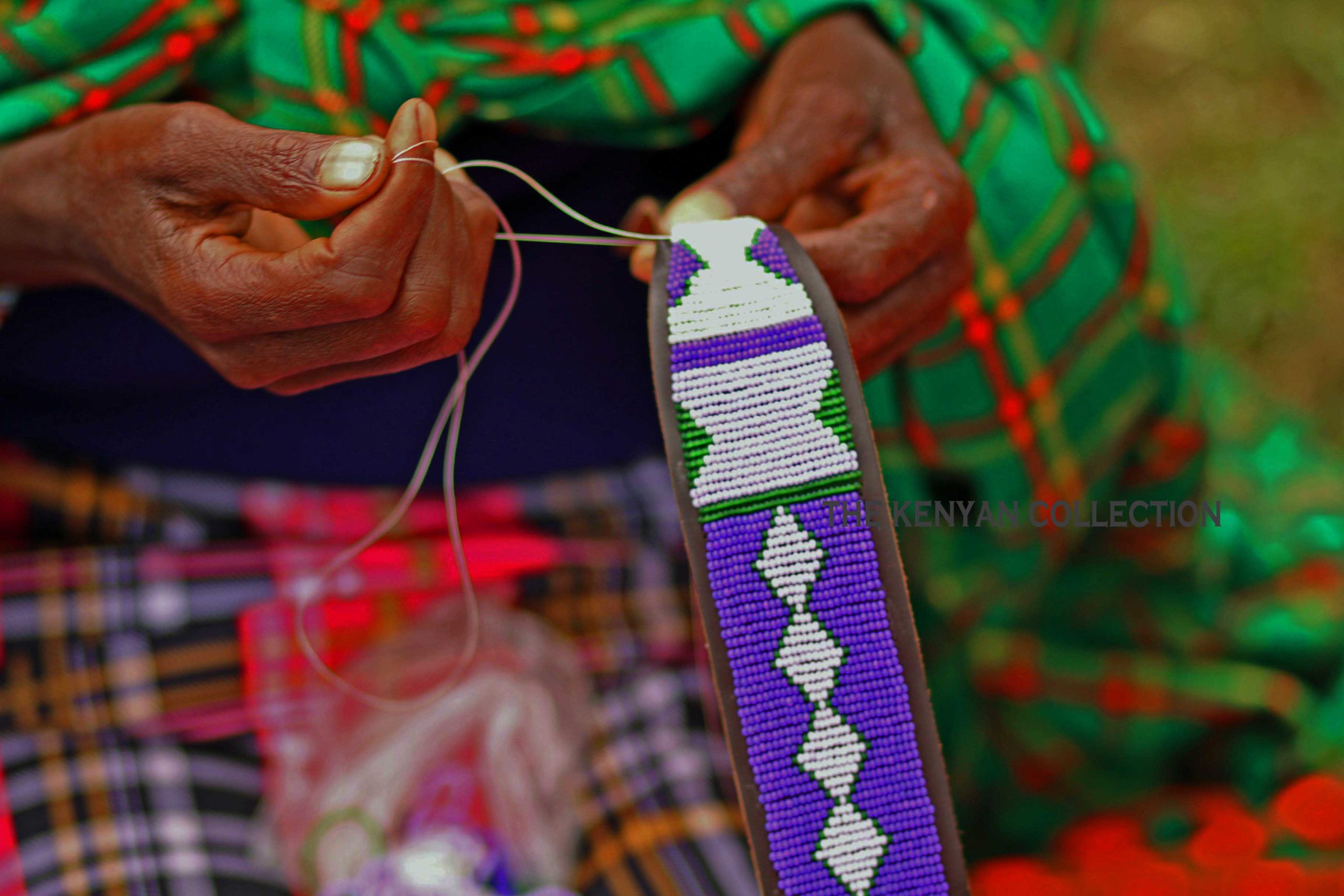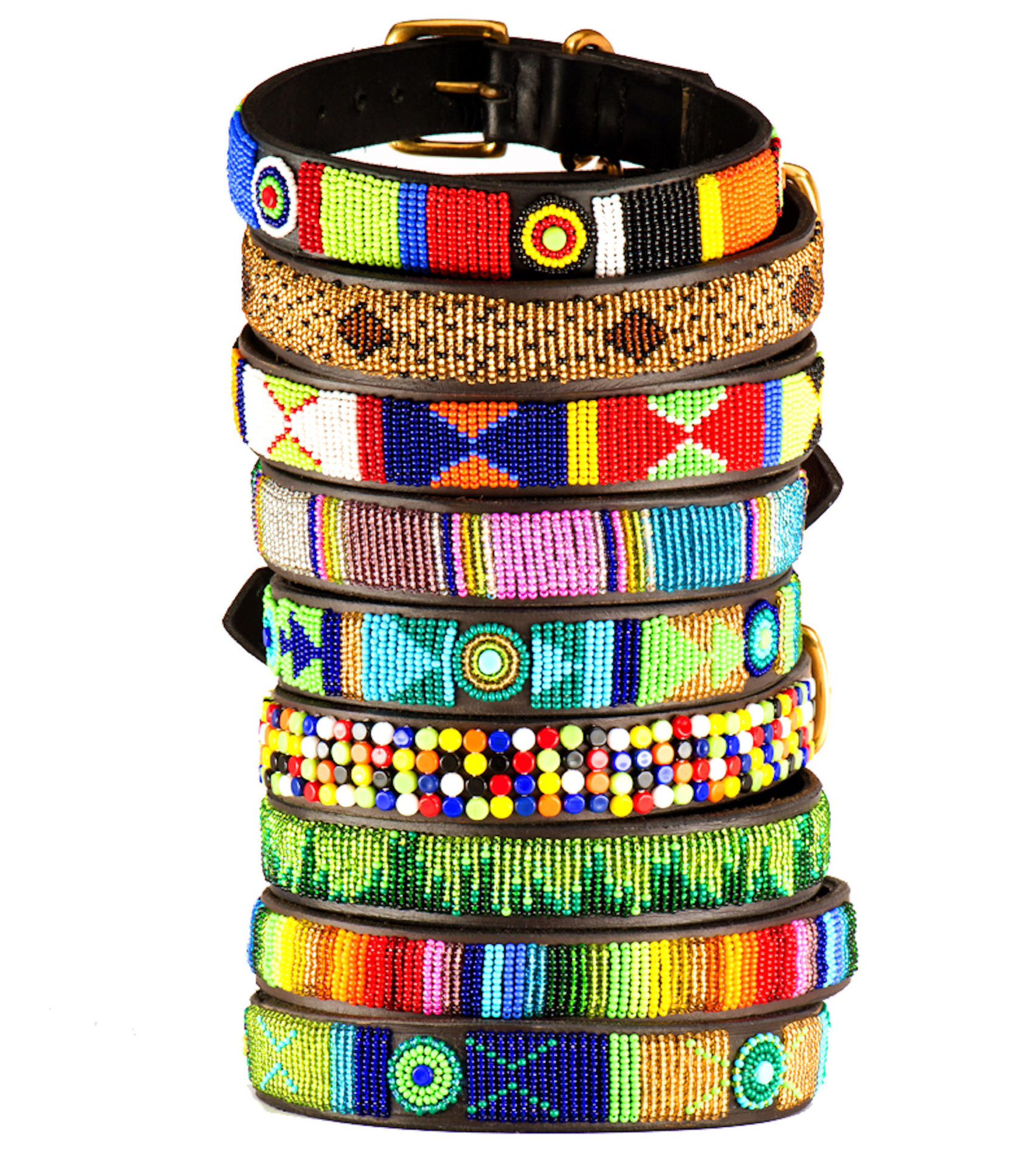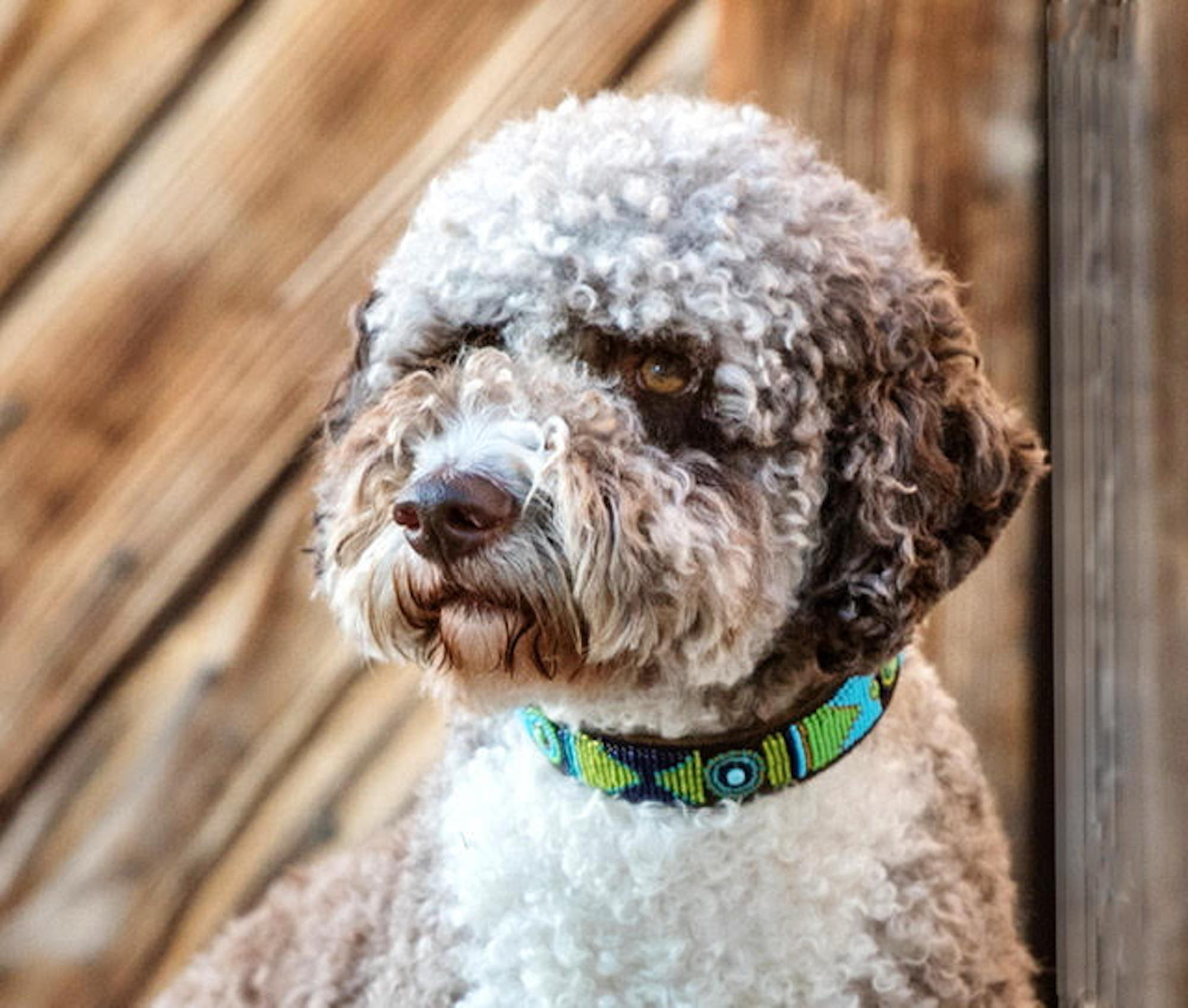Cindy Lay is the owner of The Kenyan Collection, alongside her husband Stewart. She works with female artisans in Africa, creating employment for women and bringing their creations to the global marketplace, particularly in the form of unique, beaded dog collars. We talked to her about what it’s like running a business with artisans on the other side of the world and the meaning behind Kenyan beaded jewelry.
First of all, tell us about your business and what it’s all about, in your own words!
The Kenyan Collection is about empowering women of the Maasai Tribe in Kenya to provide for their families and communities. We guarantee our mamas work and pay them the best in the industry. As evident when my workshop opens each day, new mamas are lining up for work. Once they are on our team, we will make sure they will always have work to take home with them.
How did you get involved in the business, and what has that been like?
The Kenyan Collection was founded by Joan Schultz in 2003. She wanted to help artisans get their beautiful work out to the world. The mamas had created more and more exquisite products and as a retailer of the collection, when Joan asked if I wanted to carry on the line, I said absolutely. My husband, Stewart Newman and I have owned the business now for 2 years and have grown the number of mamas working from 32 to 67 mamas.

Tell us more about beaded creations in Kenya and what they mean?
The Maasai beaded jewelry has important and specific cultural significance – the beadwork an individual wears will signify their age and social status. Generally, individuals of high social standing will wear more colorful and intricate jewelry.
Beads also serve as an important source of income for the Maasai, as Maasai beadwork has been in existence for hundreds of years. It became significant and known to the rest of the world in the 19th century after trade with other tribes. The tribe used natural resources around them to create their jewelry – everything from clay, wood and bone to copper and brass. In the late 19th century trade with the Europeans made glass beads available across the trade routes in Africa. The Maasai started using these glass beads to make their necklaces, bracelets, and other jewelry. Today glass is still the main material used by the tribe for their beads.
The colors used in the beadwork are selected for their beauty. The colors are also symbolic and have important meanings understood by the tribe.
Often these meanings have an association with cattle, which is the Maasai’s main food source and with which they have a deep connection.
Red- stands for bravery, unity, and blood. Red is the color of cows blood. Often a cow is slaughtered when the Maasai meet and therefore unity is associated with red.
Green- symbolizes health and land. Cattle graze on the green grass of the land.
Blue- represents energy and the sky. Rain falls from the blue sky which provides water for the cattle.
Orange- symbolizes hospitality. The association with cattle is that visitors are served cows milk from orange gourds.
White- represents peace, purity, and health. The association with health comes from white cows milk which the tribe drinks to stay healthy.
Yellow- like orange, yellow also symbolizes hospitality. The animal skins on visitors’ beds are yellow.
Black- represents the people and the struggles they must endure.
Do you come up with the product ideas or do the makers? How does that process work?
Both. I try to come up with a new design every 6-8 months. There are times when a mama might not understand the assignment and creates the most beautiful work and we turn it into a collection as well. There are several young mamas that produce exquisite work and I will give them a color combination with a little direction and let them come up with their own design. We have used several of their creations.

That sounds so creative and fun. What is it like working with makers across the world?
AMAZING! Even with a language barrier, the language of love and appreciation is shown through body language, laughter and smiles!
How do you stay organized when it comes to inventory, quality, and sales with an international business like this?
I work with an inventory management system that keeps track of inventory and sales. We have 2 platforms for sales, a retail website and a wholesale website where pet stores and boutiques can see live inventory levels and shop online.
How often do you go to Kenya? What does a business trip look like for you?
Our plan was to go once a year but with Covid, we were unable to in 2020. The first trip I went by myself. We put every penny into the business so funds were a bit short for both of us to go but we knew we needed to establish a relationship and to learn all the facets of what goes into the making of our products. I was blown away. We first visited the tannery where we purchase our leather. All the leather is air dried naturally. Sam has a great eye for leather and finds the best hides. We then visited George the Buckle Guy. He goes into junk yards, finds scrap metal and melts it into his own molds to create our buckles and hardware for us. Next trip was out to see 2 communities of mamas. The first was about a 4 hour trip where they live in the Inkajijik (Maasai word for a house) which are loaf-shaped and made of mud, sticks, grass, cow dung and cow’s urine. Women are responsible for making the houses as well as supplying water, collecting firewood, milking cattle and cooking for the family.
That’s incredible. It must be such a unique business to run! When you’re not on one of those trips what’s your general day to day like?
I own 2 business and just recently opened a store front with my equestrian lifestyle company so life is a bit hectic. I like it that way, I’m happier when I am busy.

It sounds like you have a lot going on! Any specific hopes/plans for the future?
To get back to Kenya and to train/hire more mamas.
What’s your favorite way to start the day?
Coffee and checking up on emails and orders from the night before.
What’s your favorite part of your job?
Making people happy. I am a pleaser and my heart is full when I see others smile.
